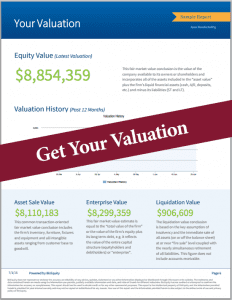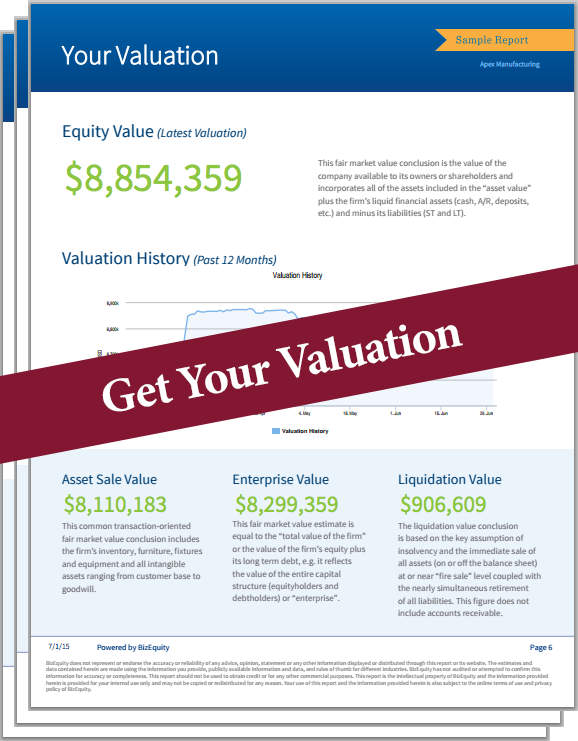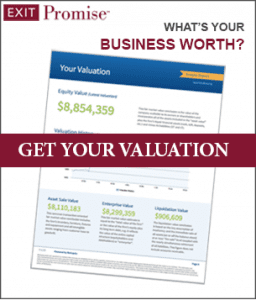
by Holly Magister, CPA | Sell a Business |
 The American Stock Exchange (AMEX) is the third-largest stock exchange by trading volume in the United States. AMEX was acquired by the New York Stock Exchange (NYSE) Euronext in 2008, at which time its name was changed to NYSE Alternext US. In 2009 it became the NYSE Amex Equities.
The American Stock Exchange (AMEX) is the third-largest stock exchange by trading volume in the United States. AMEX was acquired by the New York Stock Exchange (NYSE) Euronext in 2008, at which time its name was changed to NYSE Alternext US. In 2009 it became the NYSE Amex Equities.
The AMEX makes up about 10% of all securities traded in the United States. It was was previously located at 86 Trinity Place in downtown Manhattan, New York City, but was moved to the NYSE Trading Floor at 11 Wall Street in 2008.
What is the American Stock Exchange?
For a while, the American Stock Exchange was a major competitor to the New York Stock Exchange (NYSE), but today that role is filled by the Nasdaq, and the AMEX almost exclusively trades small-cap stocks, exchange-traded funds, derivatives, and other unique investment products.
History of the AMEX
The American Stock Exchange dates back the the late 1800s, when brokers would gather in the streets and at coffee houses to exchange securities. These traders later became known as curbstone brokers, and began to specialize in trading securities for small and emerging companies. Railroads, textiles, and oil were some of the most common new businesses trading at the time.
In 1908, the New York Curb Market Agency was established to create some rules and regulations for these curbstone brokers, whose operations had previously been largely unorganized.
In 1929, the New York Curb Exchange officially changed its name to the American Stock Exchange, and maintained its reputation for trading new products. The American Stock Exchange quickly became the leading international stock market in the U.S. In 2008, the AMEX joined the NYSE family of exchanges, enhancing its ability to trade equity, closed-end funds, options, and ETFs.
How to Trade on the AMEX
Just like the trading of securities on the Nasdaq or NYSE, when an investor would like to purchase or sell a security, they go to their broker or online trading account. Once the order is placed, a broker will get the order to the floor of the exchange in one of three ways: through an electronic communications network, through a regional exchange, or directly to the AMEX.
Small and medium-sized businesses that offer shares publicly often trade through the AMEX, thanks to its reputation of having more liberal listing requirements than the NYSE.

by Holly Magister, CPA | Sell a Business |
 Business goodwill is defined as an intangible asset that increases a business’s value above and beyond its current market value.
Business goodwill is defined as an intangible asset that increases a business’s value above and beyond its current market value.
Business goodwill arises when one company is acquired by another at a premium, above market or book value price.
Goodwill can be attributed to a number of factors, including the company’s well-known brand name, outstanding customer relations, a solid customer base, any patents or unique technology, proprietary processes, trade secrets, licenses, custom software systems, training programs, proprietary databases, published articles, or any of a number of other intangible assets not recorded as such on the company’s books.
Types of Goodwill
Generally, goodwill is evaluated by a business’s ability to generate superior income. For the purposes of small business valuation, two types of goodwill are common: institutional goodwill and professional practice goodwill.
Institutional goodwill – applies to the business and its position in the market, as well as how it is able to serve its customers.
Professional practice goodwill- applies to professional services, such as doctors, lawyers, architects, CPAs, and engineers. Professional practice goodwill is separated into two components: practitioner goodwill (the skill, reputation, and reliability of the practitioner), and practice goodwill (the reputation, location, and operating procedures of the practice).
Accounting for Business Goodwill
Business Goodwill is recorded generally only if it is acquired as a part of an acquisition or purchase. In this case, goodwill (calculated by subtracting the fair market value from the purchase price) is recorded on the balance sheet in the assets section as a non-current asset. Until 2001, it was required that business goodwill be amortized. Today, companies can elect to not amortize goodwill, but must instead undergo annual impairment tests.
Because business goodwill is subjective, it can be difficult to determine what the dollar amount of a company’s goodwill is. It is not uncommon for the acquiring company to overvalue or undervalue goodwill. An overvaluation of goodwill is bad news for shareholders, particularly if and when the acquiring company needs to write down goodwill. In this case, share values are likely to drop also.
Although goodwill is difficult to price, it is an important component that makes a company more valuable than its tangible assets would suggest. It is also a very important aspect of the negotiations when buying or selling a business because of the possible tax implications for both parties.

by Holly Magister, CPA | Sell a Business |
 In any business acquisition, a deal structure must be formed to specify the financial terms, conditions, and process for successfully completing the transaction. The deal structure outlines a set of terms that will help guide a smooth transfer of business ownership, and will usually reference whether the transaction is leveraged, unleveraged, a joint venture, or will include convertible/participating debt, or a traditional debt transaction.
In any business acquisition, a deal structure must be formed to specify the financial terms, conditions, and process for successfully completing the transaction. The deal structure outlines a set of terms that will help guide a smooth transfer of business ownership, and will usually reference whether the transaction is leveraged, unleveraged, a joint venture, or will include convertible/participating debt, or a traditional debt transaction.
Deal Structure Objectives
The key objectives for a successful deal structure include coming to a fair agreement on price (including meeting the seller’s price expectations) and ensuring that the buyers will be capable of operating the business in line with their current financial goals.
No two deal structures will be exactly the same, or include the same terms, and the buyer and seller should come to an agreement based on the unique elements of that particular business transaction. The buyer and seller, the industry, the economy, the financial market, and, of course, the business itself all will play a role in defining the deal structure.
Deal Structure Terms
There are a number of terms that will need to be agreed upon in order for any deal structure to be effective. Paramount to the success of a deal structure is the business purchase price agreement, but a number of other factors are also critical to the deal structure. These terms may include, but are not limited to, the following:
- The amount of the buyer’s down payment
- Whether the transaction is to be structured as an asset or stock sale
- The seller’s financing terms
- Any holdback of the purchase price as defined in an earnout agreement
- Consulting and/or non-compete agreements with the seller and any of the business’ key employees
- Terms related to any seller-owned real property used by the business

Financial Requirements
There are also a number of financial requirements that will affect the success of the deal structure, including factors that are both debt and equity/capital related. Some of these factors include:
- Expected compensation for the new ownership
- Debt service coverage ratio that is expected by the lenders
- Payback period on the buyer’s down payment
- Short term capital needs, post-closing
- Capital Availability post-closing to the business and its new owners
If you are preparing to buy or sell a small to medium-sized business, you may want to investigate the methods for valuing the business or use our business valuation tool.

by Holly Magister, CPA | Sell a Business |
 Goodwill is defined as an intangible asset that is created as the result of an acquisition of one company by another, at a premium price over its fair market value.
Goodwill is defined as an intangible asset that is created as the result of an acquisition of one company by another, at a premium price over its fair market value.
The willingness of a buyer to pay a premium for a given business
may be due to value built up over time from things such as the company’s widely-recognized brand name, good customer relations, a deep and diverse customer list, well-trained and loyal employees, unique patents, proprietary technology or processes, and many other other intangible assets which may not be fully-recognized and/or recorded as assets on the company’s books.
To calculate goodwill, subtract the fair market value of the tangible and intangible assets, as well as the liabilities recorded on the company’s balance sheet, from the actual purchase price.
Amortization of Goodwill
Prior to 2001, U.S. Accounting rules required that goodwill be amortized (or deducted as an expense) over a period of up to 40 years. Because amortizing goodwill reduces the profit for accounting purposes, most companies preferred not to amortize goodwill quickly and elected to stretch the amortization over the full 40-year period. Doing so helped neutralize the periodic earnings effect, and allowed companies to report supplementary cash earnings that could then be added to net income. This is exactly why, in 2001, the Financial Accounting Standards Board (FASB) issued Statement 142 which prohibits this activity.
Impairment Tests
The elimination of amortization of goodwill does come with some stipulations, however. Now companies have to run costly impairment tests, which must be performed in the first half of the company’s fiscal year. If an impairment is discovered, the company would need to reduce the goodwill carrying value and record an impairment loss.
For large public companies, the benefit of not amortizing goodwill far outweighs the costs, as higher profits make financial statements look better. However, for small and medium-sized private companies, the cost of the impairment tests is more significant.
As a response to this issue, in 2014, FASB began allowing private companies to elect to amortize goodwill on a straight-line basis over a 10-year period, giving them the option to forgo costly impairment testing. It is worth noting that if a “triggering event” happens (when the company’s fair value is less than its carrying amount), private companies who have elected to amortize goodwill will still be required to pay for an impairment test.
How Does Amortization of Goodwill Affect Financial Statements?
It is important to keep in mind that a private company’s financial statements will vary greatly based on whether they are amortizing goodwill or, instead, paying for impairment tests. Private companies that choose to amortize goodwill potentially carry a large amortization expense. As such, investors and companies looking to acquire a private business should standardize ratios and valuation methods across comparable businesses to exclude any non-cash amortization.

by Holly Magister, CPA | Sell a Business |

An Earn Out Payment is additional future compensation paid to the owner(s) of a business after it is sold. The terms and conditions that yield an earn out payment are contained in an Earn Out Agreement which is part of the Agreement of Sale. Typically, this payment is dependent on specific terms and conditions being met by the business as it operates in the years following the sale.
In recent years, Earn Out Payments have become very common in Mergers & Acquisitions. Yet many advisors, business sellers, and buyers find the inclusion of an Earn Out Payment Agreement in a deal’s structure problematic. But this does not have to be the case if the seller and buyer align the terms in the Earn Out Payment Agreement with their common post-closing objectives.
Why are Earn Out Payments Used?
One reason Earn Out Payments exist is due to a difference or gap between what a buyer is willing to pay the owner of a business and its asking price. An Earn Out Payment can bridge the gap between respective valuations in order to close the sale.
Earn Out Agreements also are used when a buyer disagrees with the seller’s projected profitability and expected growth. In this case the company must meet certain profitability expectations in order for the buyer to pay the seller additional compensation.
In both cases, it’s important to understand that an Earn Out Payment is not guaranteed to be paid to the business owner unless such a guarantee is specified in the Earn Out Agreement and the agreement’s terms are met.
Who Should Consider an Earn Out Agreement?
Earn Out Agreements have become increasingly common in recent years and they are most popular in times of economic and political uncertainty. And while any type of
business sale may consider an Earn Out Agreement, they tend to be most popular among private equity investors who may not have the expertise to keep the business running on its own after the purchase. In such cases an Earn Out Agreement may be used to entice the former business owner to remain involved in the
business following the sale.
Regardless of the type of business, Earn Out Agreements should be considered only when the company will be operated and managed the same in future years as it is at the time of sale. This is the better way to project future performance. But if future plans involve dramatic shifts in operation, an Earn Out Agreement may not make sense, especially for the seller.

What is an Earn Out Payment Formula?
Earn Out Payments may be linked to almost anything to which a willing seller and buyer can agree. Examples of measurements typically found in Earn Out Payment formulas include: Gross Revenue, Gross Profit Margin, EBITDA,
Adjusted EBITDA, EBIT, Gross Revenue per Full Time Employee, Employee Retention Rates, Gross Revenue Growth Rates, and more.
Typically an Earn Out takes place over a three to five year period following acquisition. Generally, sellers should be cautioned to limit the time frame of the payout since an Earn Out Agreement could defer anywhere from 10 to 50 percent of the purchase price.
Limitations and Cautions When Considering an Earn Out Agreement
When considering the terms of an Earn Out Agreement a cautious seller should limit their exposure only to terms over which they have control. Otherwise the fate of the seller’s Earn Out Payment could fall into the hands of the buyer or other parties after the closing.
For example, an Earn Out Payment tied to profitability of the business after the sale would be unwise unless the seller remained in management control. Even if the seller retains full management control after the business is sold, this type of Earn Out Payment measurement may not be ideal. The buyer may worry the seller could understate expenses or overstate revenue to ensure the future payout.
Conversely a seller may worry the company could be purposefully mismanaged in an effort to miss the performance targets required for additional compensation to be paid to the seller. Nevertheless, it’s always best practice to tie the Earn Out Payment formula to a measurement or metric which will be within the seller’s control after the sale of the business.
Who Should Negotiate the Earn Out Agreement Terms When Selling a Business
To avoid potential conflicts after the closing, the buyer and seller should make certain their respective representatives have a thorough understanding of the business’s operations and its cash flow. While it’s not uncommon for the
business broker or M&A Intermediary to negotiate on behalf of their respective clients, these advisors generally do not have a deep understanding of the seller’s business.
Likewise, the seller’s attorneys know much about transaction law, but typically don’t understand the selling business’s finances. Accordingly, it’s best to consider assigning the negotiation of the terms and conditions of the Earn Out Payment to the business owner and his or her Chief Financial Officer.

While Earn Outs certainly can offer peace of mind and fair value to both the buyer and the seller, they require extra time to negotiate, draft, and implement, and they could result in a lost sale or extra costs for the buyer or seller, including litigation and auditing.
That’s why it’s always best practice to enlist the services of an attorney with extensive experience creating well-reasoned and legally binding Earn Out Agreements which make sense for both the buyer and the seller.

by Holly Magister, CPA | Sell a Business |
 A Data room may be a physical room or a virtual room and are used for a number of reasons – including data storage, document exchanges, financial transactions, file sharing, and legal transactions. Often, data rooms are used for the sale of a business or when raising capital for a business, and provide a secure location to house highly sensitive documents regarding the business’s past, present, and future operations.
A Data room may be a physical room or a virtual room and are used for a number of reasons – including data storage, document exchanges, financial transactions, file sharing, and legal transactions. Often, data rooms are used for the sale of a business or when raising capital for a business, and provide a secure location to house highly sensitive documents regarding the business’s past, present, and future operations.
Physical Data Room
A physical data room is a secure location where hard copies of corporate documents are stored for confidential review. Generally, prospective buyers will schedule time in the data room to review and analyze these documents in an effort to decide if the purchase of the business or related assets is desirable.
A down side of a physical data room exists in the case of multiple prospective buyers, lenders or investors. Each will need to separately schedule review time in the secure data room, often traveling to do so. All prospective parties will spend hours, even days, sorting through thousands of documents.
Because physical data rooms require prospective buyers to be on-site at the secure data room location, the pool of possible buyers is often much smaller than would otherwise be the case if the data room were virtual. Additionally, the effort it takes to schedule time in a data room, travel to it, and review the documents it contains, can result in a longer time frame for completing a purchase, and could possibly result in a lost deal.
Virtual Data Room
Virtual data rooms have become increasingly popular as a result of the inconvenience associated with a physical data room. Documents are stored in an electronic format, on a secure central server, and are easily accessed online by authorized parties.
Virtual data rooms eliminate the need for prospective parties to travel to a secure location for data review, saving valuable time, money, and resources. Using virtual data rooms, sellers are able to market their company to a global audience, gaining the attention of a much wider group of bidders. Likewise, prospective parties are able to review possible acquisitions at their convenience in a much more efficient manner, improving the chances of a smooth and timely transaction.
Along with allowing prospective buyers to review due diligence documents, these secure online data rooms offer a place for deals and transactions to be managed online, including fundraising, corporate finance, joint ventures, licensing agreements, sharing litigation files, M&A transactions, and much more. Partners, clients, buyers, attorneys, accountants, and other authorized parties can review documents relevant to the transaction on a secure website.

by Holly Magister, CPA | Sell a Business |
 An offering memorandum is a legal document that states the objectives, terms, and risks typically associated with private placements for public companies. However, an offering memorandum may also be used by buyers and sellers of private middle market businesses. This formal document is usually associated with transactions that are exempt from full registration under federal securities law, providing investors with valuable disclosure information.
An offering memorandum is a legal document that states the objectives, terms, and risks typically associated with private placements for public companies. However, an offering memorandum may also be used by buyers and sellers of private middle market businesses. This formal document is usually associated with transactions that are exempt from full registration under federal securities law, providing investors with valuable disclosure information.
What is the purpose of an offering memorandum?
An offering memorandum is a selling document that is created by an investment banker or intermediary to generate interest in a sale or otherwise raise capital. The purpose is to provide prospective buyers or investors with information on the offering, while simultaneously protecting the sellers from any liability that is associated with selling unregistered securities.
What is included in the offering memorandum?
The offering memorandum typically includes items such as a detailed description of the company’s operations, management biographies, customer data, and financial statements. Also included are details of the terms of the transaction, the minimum investment amount, investor qualifications, and deadlines for purchasing shares.
Other items that may be included in this document include:
- Customer diversification
- Future projections and goals
- Future growth opportunities
- Barrier to entry from competitors
- Opportunities in the marketplace
How is the offering memorandum different from a prospectus?
While a prospectus is generally offered when a company issues an IPO (initial public offering) or publicly-traded securities, an offering memorandum is reserved for the sale of equity to investors in a private placement.
Shine a positive light on your company.
While an offering memorandum is usually created by a hired advisor, the company itself should supply and thoroughly review all information included in the document to ensure its accuracy. Many of its statements and financial data will likely be included in the Asset Purchase Agreement or Stock Purchase Agreement in the Reps and Warranties section.
The offering memorandum is also the company’s opportunity to describe any past issues the organization has faced, and explain the steps taken to correct the problems, plus any future strategies to increase revenue, improve cash flow, and protect margins.

by Holly Magister, CPA | Sell a Business |
The investment banking market is made up of two sides – the buy-side, and the sell-side, both of which are responsible for researching and assessing stocks and other investments.
The buy-side refers to advising institutions concerned with buying investment services. These buy-side entities most often include private equity funds, mutual funds, unit trusts, pension funds, insurance companies, hedge funds, and proprietary traders.
The sell-side part of the financial industry has to do with the creation, promotion, analysis, and sale of securities to the buy-side.The buy-side and the sell-side are dependent upon one another.
 Buy-side entities consist of money managers who work to create value for their customers by purchasing assets which they believe are undervalued. These money managers often use complicated and proprietary valuation methods to determine which investments are under-priced, and then provide recommendations to the managers of the fund that employs them. These recommendations are exclusively for the benefit of the fund, and are not made public knowledge.
Buy-side entities consist of money managers who work to create value for their customers by purchasing assets which they believe are undervalued. These money managers often use complicated and proprietary valuation methods to determine which investments are under-priced, and then provide recommendations to the managers of the fund that employs them. These recommendations are exclusively for the benefit of the fund, and are not made public knowledge.
Funds often employ buy-side analysts for their talent in valuing investments, and do not want that information available to competing funds. These analysts are evaluated based on the number of profitable recommendations they make.
Buy-side firms often buy large portions of securities, making their purchase when they believe they’ve found a security or investment that is priced below the true market value.
How is Buy-Side Different Than Sell-Side?
The sell-side makes up the other side of Wall Street, and functions in an opposite manner to the buy-side.
The sell side makes public pricing and valuation recommendations. It provides recommendations for upgrades, downgrades, valuations, and target prices and opinions to the public market.
Conversely, the buy-side is made up of money managers at hedge funds, insurance companies, institutional firms, pension funds, and mutual funds and functions more privately, keeping its strategy secret from public knowledge for the benefit of its customers. Although individual investors who purchase securities for their own profit technically fall into this group, the term ‘buy-side’ is reserved generally for professional money managers who buy and sell securities for the benefit of their clients.
Sell-side analysts work typically for a brokerage firm that manages individual investment accounts, and make investment recommendations to the firm’s clients and the general public. These analysts make broad recommendations that help clients decide whether to buy or sell certain investments. When a client makes the decision to buy or sell, the firm will earn a commission on the transaction.
In general, buy-side analysts offer more broad coverage of sectors – for example their research might cover the “industrials” or “technology” sector as a whole, while sell-side firms focus their evaluations on industries within those sectors (like the software or semiconductor industries).
Does Buy-Side or Sell-Side Matter to Small and Medium Sized Businesses (SMBs)?
Yes, indeed.
The economic factors which impact the value of businesses being acquired and sold on Wall Street apply to SMBs, especially those which migrate from startup to the middle market.
Those factors include the current cost of capital (interest rates), the level of M&A activity, and whether a given business’ industry is growing or shrinking.
 When Wall Street mergers, acquisitions, and capital investments are plentiful, the middle market benefits too. And when deals cease and capital is scarce, businesses of every size suffer.
When Wall Street mergers, acquisitions, and capital investments are plentiful, the middle market benefits too. And when deals cease and capital is scarce, businesses of every size suffer.
What You Need to Know as an Investor
Because sell-side recommendations are not specific to any one client of a firm, but rather are general opinions, they may not be ideal for certain investment strategies. And while there should technically be an information barrier or “wall” between the buy and sell-side, sometimes these barriers can become blurred, causing a conflict of interest.
For example, some investment banks issue sell-side research to the public while simultaneously trading their own funds for profit.
When considering a sell-side investment recommendation always be sure to keep an eye out for conflicts of interest and consider your own investment strategy before making a decision.

by Holly Magister, CPA | Sell a Business |
 Non-Solicitation Agreements (NSAs) are made by two parties to protect one party from a potential loss of income or assets. This type of agreement is warranted and often made when one party is about to become aware of certain important relationships the other party has developed. The non-solicitation agreement may be set forth between two or more businesses and/or individuals. The NSA may be either a stand-alone agreement or included as a separate clause in other types of business agreements.
Non-Solicitation Agreements (NSAs) are made by two parties to protect one party from a potential loss of income or assets. This type of agreement is warranted and often made when one party is about to become aware of certain important relationships the other party has developed. The non-solicitation agreement may be set forth between two or more businesses and/or individuals. The NSA may be either a stand-alone agreement or included as a separate clause in other types of business agreements.
A non-solicitation agreement is a contract in which a business, individual, or employee agrees not to solicit clients or customers for their own benefit or the benefit of a competitor during their association or for a subsequent period of time. A non-solicitation agreement may also include other restrictions, such as an agreement not to solicit or encourage employees, coworkers, or even independent contractors to join or work for another business in the future.
In most cases, a non-solicitation agreement is presented to an employee as a separate clause in their employment agreement. In other cases, a non-solicitation clause may be part of a confidentiality or nondisclosure agreement, severance package, or non-compete agreement.
Why Use A Non-Solicitation Clause When Selling a Business?
When businesses are involved in a merger or acquisition, it is not unusual to see the use of a non-solicitation clause in the transaction’s confidentiality agreement. In this case, the seller desires to protect its employees, customers, and other important relationships from a potential buyer’s unethical attempt to steal away the business’s intellectual property and intangible assets.

When Is A Non-Solicitation Agreement Used With Employees?
Non-solicitation agreements can be presented to the employee at any time, whether that be prior to the first day of employment, or after the employee has already started working for the company. These agreements are most often used in service or sales industries, and are especially common when a business has a limited pool of customers or clients. Non-solicitation agreements are also common when a company sells a product that isn’t necessarily unique, and competes primarily on price.
What Makes A Non-Solicitation Agreement Enforceable?
A non-solicitation agreement needs to meet certain criteria in order to be enforceable by law. Below, we’ll outline the basics, however we recommend seeing an experienced lawyer for guidance on drafting a non-solicitation agreement for your business, as requirements can vary by state.
Valid business reason. In order to enforce non-solicitation agreements, a company or owner must have a valid business reason to do so, such as protecting a valuable customer list, trade secrets, or protecting valuable employees with specialized skill sets.
Employees and customers are free to leave at will. Non-solicitation agreements can not be used to force employees or customers to stay with the company, or keep them from signing on with a competitor. It only demands that former employees not improperly solicit a prior company’s customers, clients, or employees.
A customer or client list must be worth protecting. The company’s customer list must be confidential, and must not be accessible by the public. The company must provide proof that it spent valuable resources (time and money) on creating its unique customer base.
Common Mistakes Made When Drafting a Non-Solicitation Agreement
Not defining the term “solicit.” The term solicit is vague, and when drafting your non-solicitation agreement, we recommend defining what it means to your business. For example, your agreement may explain that a former employee cannot interview or hire another former co-worker, or speak with to customer with the intent of obtaining business.
Maintaining old agreements. Be sure to reevaluate the employment agreement each time an employee is promoted or changes positions. Since different positions may have different levels of access to sensitive information, a new agreement should be signed with each job title change. Alternatively, language should be included in the agreement that states the agreement is valid for the employee’s term with the company, regardless of position changes.
An agreement that is too vague or broad. Non-solicitation agreements should be tailored for each position, depending on the amount of sensitive information or customer information each position can access. Additionally, the agreement needs to be reasonable and specific about exactly what “solicitation” means.
The Difference Between A Non-Solicitation Agreement and A Non-Compete Agreement
Often confused, a non-solicitation and a non-compete agreement have two separate purposes. While a non-solicitation agreement ensures that former employees do not solicit former co-workers, clients, or customers, a non-compete agreement is more broad, and ensures that a former employee doesn’t compete directly with its former employer. This could mean placing restrictions on where the employee can work for a specified amount of time following employment.

by Holly Magister, CPA | Sell a Business |

The term sandbagging refers to an intentional lowering of expectations.
Sandbagging can apply to anything from sports to business, and is the practice of intentionally deceiving others in an effort to lower the opponent’s or other party’s expectations.
In this post we will examine how sandbagging applies to businesses.
Sandbagging in a Startup
Sandbagging in business is the practice of initially under-promising and, after gaining an advantage, over-delivering.
In the case of starting a business, the business owners may hide or limit the expectations of the company’s actual potential growth and earnings capability to produce better-than-anticipated results for investors. The company manages the shareholder’s expectations by forecasting results that are less than what the business owners may actually expect.
Once the better-than-anticipated results are achieved, the company and its management looks better than expected to its shareholders. This tactic may be used to gain an advantage in future negotiations.
Practice Tip:
Keep in mind that this practice is difficult, if not impossible, to maintain. Once the company realizes its full capability, it is difficult to continue to maintain low expectations over time.
As investors, analysts, and shareholders notice that a company far outperforms its expected earnings period after period, the market will adjust its expectations automatically regardless of what the company says its predicted earnings will be.
Sandbagging in the Sale of a Company
Sandbagging can also occur during the negotiations of an Asset Purchase or Stock Purchase Agreement whereby the buyer is fully aware of inaccuracies and/or omissions in the seller’s representations and warranties, and moves forward with the purchase anyway.
The buyer sandbags the seller by using these inaccuracies and/or omissions as the basis for an indemnity claim against the seller post-closing. Sandbagging in the context of a business acquisition is the buyer’s intentional oversight regarding one or more misrepresentations or omissions in the purchase agreement.
Practice Tip:
Knowing who your buyer is and whether they have a good reputation in their previous acquisitions is prudent. Ask to speak to the former business owners who have sold their businesses to your prospective buyer before you sign a Letter of Intent.
If after speaking to the former owners, you feel comfortable proceeding to the next stage in the selling process, then be diligent as you negotiate the purchase agreement.
Seek the assistance of your legal and tax professionals in order to make full and accurate representations to your prospective buyer.

by Holly Magister, CPA | Sell a Business |

When a business owner begins to negotiate the sale of his or her business with buyers for the first time, he or she will inevitably face a difference between the buyer’s offer price and the desired selling price. It’s at this point when a lively debate between the parties will occur over the underlying reasons for the business’s asking price being what it is. At this time a seller will be well-served if able to offer justification for an increased business valuation and a higher business selling price.
Developing concrete reasons to substantiate a higher asking price should start long before the business is on the market for sale. In addition to developing good cash flow, attracting a strategic buyer, having consistent revenues and no concentration risks, business owners should continuously take these three steps if they ultimately want to sell their business at a premium price:
Identify All Intangible Assets
Intangible assets are components of a business that add value beyond the tangible assets such as equipment and monetary factors such as EBITDA. These include intellectual property such as trade secrets, customer relationships, permits, contracts, and more. Intangible assets can vary greatly from business to business, as different types of information, processes, and methodologies are valuable to different industries.
Business owners should keep a running list of their intangible assets as the business grows. This will make it easier when the time comes to sell, as the owner can present these assets to their own Business Valuation Expert and the buyer’s team of acquisition experts.
The following list provides more than a few examples of intangible assets that business owners should be aware of and document carefully:
- Advertising Campaigns and Marketing Materials
- Website, domains and subdomains
- DBA Certifications
- Contracts, Current and Backlogs
- Computer Database
- Copyrights, Registered and Claimed Trademarks
- Patents
- Custom-built Plant and Offices
- Distributorship Agreements
- Employee Training Programs and Manuals
- Government Designations
- Licenses
- Trade Secrets
- Vendor Relationships
- Trained Employees and Employment Agreements
- Royalty Agreements
- Proprietary Designs, Documents and Delivery Systems
- Customer Base
- Mailing List (Email and traditional Mail)
- Owner’s Reputation and Industry Expertise
Protect Your Intangible Assets
After identifying the intangible assets, business owners should take steps to protect them. For intellectual property, implementing confidentiality, nondisclosure, and non-compete agreements can help prevent proprietary information from leaving the company.
Businesses should also consider filing for trademarks, copyrights, or patents, depending on the type of products or services the business provides. For potential names and logos to be trademarked and used throughout the U.S., it is important to check with the United States Patent and Trademark Office to ensure that the mark is legally protectable and not already in use.
With so much information stored digitally, it is essential to invest in secure record-keeping software and programs. Business owners should work with their website developers or IT departments to ensure their sites are not vulnerable to hackers.  Employees should use strong passwords, password protect documents, and limit sharing of sensitive files with any third parties.
Employees should use strong passwords, password protect documents, and limit sharing of sensitive files with any third parties.
Defend Your Intangible Assets
If someone steals or leaks information about an important intangible asset, the business should be prepared to take legal action. In order to be successful in a trade secret lawsuit, business owners must prove they do make an effort to keep the information in question secret, and that it provides a competitive advantage to the business. This is one reason why the careful documentation of intangible assets is crucial for every business. Identifying and protecting the assets allows the owner to defend them should the occasion arise.
During the early stage of the acquisition process, it’s from an outsider’s perspective that the buyer typically views the financial statements and other more tangible factors related to the business. It’s not until the gap between the asking price and the offer price is defined, that most buyers really begin to explore fully the business, its back-end operations, and all of the important intangible assets developed and deployed to create a valuable business.
So it’s up to the business owner to identify, protect and defend those valuable intangible assets. Diligently doing so, will likely provide a business owner with the means to receive his or her asking price.

by Paul Cronin | Sell a Business |

Perhaps you are one of those business owners who feels you have plenty of time to think about exiting your business. You consider yourself lucky, and whenever you feel it’s time to leave, you will be able to exit your business with ease.
Well, it may not be so. This is not one of those articles about how long it takes to leave a business, or how hard and expensive it can be. Instead it’s about the false impression many business owners have of life after the business – all wine and roses (PS it’s not).
As we consult with business owners, we find many are struggling with how and when to leave. Some are torn by commitment to family (“I promised my wife I would be retired by this age – and she is not letting me off the hook”) or commitment to business partners (“my partners are telling me, you can’t leave now, we’re not ready for that”). Others think that leaving would feel like a kind of death. Either way, they think business owners who leave easily must be “lucky”.
Retirement Myths vs Reality – An October 2014 article by Charlene M. Kalenkoski, Ph.D., and Eakamon Oumtrakool published in the Journal of Financial Planning examined the relationship between how middle and high-income retirees spend their time and how much money they would need in retirement. The article also compared the top 20 weekday activities of full and part-time workers to those of retired individuals using data accumulated by the Bureau of Labor Statistics in its 2010-2012 American Time Use Survey (ATUS).
The time use comparison was daunting. Full time workers spent most of their time (reported in minutes per day) working and sleeping. No surprise there. The rest of their time was split into the various other activities of daily living. Retirees on the other hand reported their top ten time uses this way:
521 – Sleeping
223 – Television and movies
89 – Eating and Drinking
48 – Reading for personal interest
39 – Washing, dressing, grooming oneself
34 – Socializing and communicating with others
34 – Food and drink preparation
30 – Lawn, garden, houseplant care
24 – Interior cleaning
23 – Shopping, except groceries, food, gas
In other words, most retired people are replacing work with watching TV – YIKES! Makes you want to keep working forever, right? Sorry, you can’t. No one does.
I have owned several businesses over the years, and leaving each had a different outcome, but the process was always both painful and joyful. What I have learned in my time at STPI is that if you take the time to explore where you are at this point and life, you can then shape your new future. In other words, owners who leave “easily” aren’t lucky, they make their own luck.
So how can YOU do that? – Start by asking yourself some questions:
What am I proud of myself for?
What do I value myself for?
What did I like to do when I was younger?
What transitions have I had in my past, what did I learn from them?
What are some of my fears and what is causing these fears in me?
Who do I know who will listen to me non-judgmentally?
What is my target “leave by date”?
Purposeful Living leads to living healthier and longer – You need to answer these questions within a framework of the various aspects of your life illustrated below.

©2008 – 2015 Successful Transition Planning Institute
By starting with a series of questions (the list is MUCH longer by the way), you can gradually chart a path forward. By using a framework to brainstorm ideas and make decisions on the various aspects of your life, you can build a new sense of purpose.
Following this path can lead you to a much better life than you can imagine now – one full of purpose and meaning. Now that has nothing to do with being lucky, does it?

by Holly Magister, CPA | Sell a Business |

When things go wrong with the sale of a business, the parties involved look for remedies in the liquidated damages provisions established in the purchase agreement.
Such provisions are included when a purchase agreement has been signed in advance of an actual closing when the business is transferred and a purchase price is paid.
To enforce a liquidated damages provision, the amount to be paid must be appropriate to the amount of damage the breach of contract incurs. This is in contrast to a penalty clause, which is designed to punish a party in breach with a fine that is disproportionate to the actual harm caused. In addition, liquidated damages must cover incidents in which the exact amount of injury would be uncertain or difficult to quantify.
Why Would a Business Seller Want to Have a Liquidated Damage Provision?
Because liquidated damages provisions are agreed upon by both parties when the purchase agreement is created, the seller has some power over determining how much they receive if the buyer breaks the contract. It eliminates the time and money that could be needed for a lengthy court battle to determine a settlement.
Why Would a Business Buyer Want to Have a Liquidated Damage Provision?
Liquidated damages provisions act as a sort of limited insurance for the buyer. If the seller breaches the contract, the buyer knows the exact sum he can expect to receive from the seller to cover his damages. Liquidated damages mitigate the buyer’s losses if the seller fails to meet the terms of the contract.
Examples of Liquidated Damage Provisions in Business Purchase Agreements
A good example of a damage that would be difficult to quantify is a business involving the transfer of property or real estate. If the agreement states that the seller would make the storefront or property available on a certain date, it would be a breach of contract if the seller handed over the property a month late. The exact amount of money the buyer could have made in that time would be difficult to quantify, and so could be written into the purchase agreement as a liquidated damages provision.
If the contract involved a confidentiality agreement or a non-disclosure agreement, publicizing sensitive information could also constitute a breach of contract. The amount of damage the release of a trade secret would cause is again difficult to quantify, and could be addressed in a liquidated damages provision.
As previously stated, liquidated damages provisions are only held up in court if they meet specific requirements. Make sure you talk to your legal counsel when preparing your purchase agreement to ensure such provisions are not in fact penalty clauses.

by Holly Magister, CPA | Sell a Business |

When a business is about to be sold, the parties to the sale may find it beneficial to establish an escrow agent to handle the transfer of certain assets and cash between the buyer and seller. Many times the parties agree to use the escrow account held by one of the party’s business attorneys. However, in many cases the parties prefer to hire an independent escrow agent to handle the assets and cash that will change hands.
What Does an Escrow Agent Do When a Business is Transferred or Sold?
An escrow agent acts as a third party between the buyer and seller to ensure that all conditions of the sales agreement are met. The escrow agent can hold the buyer’s earnest money deposit or down payment, making it easier for the buyer to reclaim that money if the sale is cancelled.
An escrow agent also performs Uniform Commercial Code (UCC) searches to discover any liens against the business being sold. The agent is also responsible for publishing a Notice to Creditors of Bulk Sale in asset transactions, which allows creditors to file claims for any debts they are owed by the seller.
To protect the seller, the escrow agent often requires the buyer to deposit funds several days in advance of the closing date. This ensures the buyer does in fact have the cash, and the seller receives the amount agreed upon in the contract.

How Does the Escrow Agent Know When to Release the Assets and/or Funds to the Appropriate Party?
The escrow agent will not release assets or funds until both the buyer and seller have fulfilled all of their obligations. This includes the terms outlined in the purchase agreement, due diligence, and the transfer of funds. When the principals have met all the terms and requirements of the deal, the agent will “close” the escrow and distribute all funds to the appropriate parties.
Who Pays for the Services Provided by an Escrow Agent?
Buyers and sellers can negotiate who pays the escrow fees when creating a purchase agreement. Often, escrow fees are split between the buyer and the seller.
How Much Does it Cost to Hire an Escrow Agent?
The amount of the fee depends on the size of the business deal, though there is typically a minimum for very small transactions. Some escrow companies calculate their fees by charging a set base rate per thousand dollars of the final sale price.
There also may be processing fees, wire transfer fees, and legal review fees associated with hiring an escrow agent. When considering an escrow service, verify they are properly licensed and insured and also ask about their agents’ experience and fee structure before entering into any agreements.

by Holly Magister, CPA | Sell a Business |
 When working through a business sale, an inordinate number of resources on both sides of the table are dedicated to drafting and negotiating the Stock Purchase or Asset Purchase Agreement. This is true especially in the last one-to-two weeks before the closing. In fact, I’ve had clients remark that during their entire tenure as an entrepreneur, they never spent as much time speaking to their advisors as they did during the last week of their business ownership journey!
When working through a business sale, an inordinate number of resources on both sides of the table are dedicated to drafting and negotiating the Stock Purchase or Asset Purchase Agreement. This is true especially in the last one-to-two weeks before the closing. In fact, I’ve had clients remark that during their entire tenure as an entrepreneur, they never spent as much time speaking to their advisors as they did during the last week of their business ownership journey!
While I don’t dispute that it’s wise to seek professional advice when negotiating these important agreements, I also believe as much care should be dedicated to the initial confidentiality agreement between the negotiating parties and to the terms and conditions of any earn out agreement. Unfortunately, shortcuts with these two important business sale agreements are common.
The Confidentiality Agreement in a Business Sale is the First, Critical Document
It is very common for a business owner to be approached by a competitor about buying their business. Often such initial conversations are very friendly in nature. Accordingly, the business owner may find himself unprepared and feeling a bit awkward about the situation. Not knowing what to reveal or hold back places most business owners at a disadvantage early on in the selling process.
It’s also not unusual for a business owner to tell me they’ve already given a potential buyer a copy of their financial statements before they’ve sought professional advice and assistance. And while this situation is not ideal, it’s not too late to execute a confidentiality agreement with the potential buyer.

Confidentiality Agreements should be mutual as any potential business buyer should be willing to share their financial information with the business owner and his or her advisors. The business owner has the right, and his or her advisors have the obligation, to vet the financial ability of any potential buyer to purchase the business.
The confidentiality agreement should also spell out other obligations of the parties including, but not limited to:
- Maintaining the confidentiality of all information, reports, contracts, intellectual property, sales and financial information, tangible and intangible property, research findings, trade secrets, etc. as disclosed by the parties to the transaction.
- Using the confidential information only for the purpose of evaluating the potential acquisition.
- Prohibiting the buyer and the seller from making disclosures to others regarding the fact that a business transaction was contemplated should the transaction not occur.
To protect a business owner from a potential buyer ‘hiring away’ one or more of his key employees, I always recommend including an ‘employee non-solicitation’ clause in the confidentiality agreement for a reasonable period of time. This clause protects the seller and is very comforting when a potential buyer is a competitor. The last thing a buyer wants to face is a competitor picking off his valuable employees after the competitor decides to pass on the acquisition!
By starting the relationship with a well-drafted confidentiality agreement, the business owner is able to set the proper tone for the process and reduce risk if the acquisition doesn’t close. A credible potential buyer will understand its importance.
The Earn Out Agreement and Formula
Recently, I met a prospective client who asked me “one of my friends had an earn out agreement when he sold his business. Isn’t that risky and why would anyone accept it?”
Yes, earn out provisions have a bad reputation. But in fact, if properly designed and used, they can be valuable to the business seller and buyer alike. Let’s explore what they are, why they are used, and how to reduce the risk associated with an earn out agreement.
Earn Out Agreement vs. Business Owner Financing
An earn out agreement is not a form of business acquisition financing although it is often mistaken as owner financing or as a business owner ‘holding the paper’ for a buyer. In reality, an earn out agreement offers a means for a business owner and business buyer to bridge the difference between their respective opinions regarding the fair market value of the business.
Business owner financing is used in smaller transactions when the buyer is unable on his or her own merit to obtain the cash or financing necessary to cover the agreed upon purchase price. If a buyer proposes to a business owner to buy his or her business using an ‘earn out payment’, without a corresponding interest factor, the buyer should be shown the door.
Earn Out Agreements When Business Growth is Strong
When a business for sale finds it’s in a good business growth cycle, it’s natural for the business owner to want to capture that upside in the negotiated sale price. To a certain extent, this is possible. However, most business buyers are not going to give credit for future business growth (revenue or income) without hedging their bet. What if the future income doesn’t occur? Such ‘what if’ scenarios are appropriately addressed in an earn out provision in the business purchase agreement. If the future growth in business revenue and profit becomes a reality post acquisition, then both the former and new business owner can share in the incremental increase in the value of the business.
How To Align the Earnout Agreement So Everyone Wins
Aligning the post-acquisition goals for the business buyer to the earnout agreement offers both parties in the sale of a business an opportunity to achieve the best outcome. There are a number of recommendations for the business seller and the new owner to consider when drafting the earnout provision in the purchase agreements. They include:
- If the former business owner remains in the business as either an employee or a consultant for a period of time, he or she may have some influence over the business’ continued growth abilities and income. If not, then an earnout provision payment for the former owner may be a bit of a gamble. For this reason, earn outs are not usually recommended if the former business owner plans to end his or her employment after the sale closes.
- An earnout agreement is typically proposed by the buyer when there is a gap between the offer and asking price of the business. It may be based on a difference in opinion regarding the value of the business’ intellectual capital, other assets, and/or future income, among other factors.
Using the difference in opinions between the parties is often a good place to start when defining which factors should be the basis for the additional payments to the business seller.
For example, if the seller provides a buyer with a three year projection that indicates sales will increase at an annual rate of 15%, then this may be a valid benchmark for determining whether a seller will receive an earnout payment.
It is extremely important for sellers to carefully consider how their projections are prepared when they are requested by prospective buyers. If a seller believes his or her business is worth a certain sum with a three year projected revenue growth of 15% and the asking price is met by the buyer, then the seller must be prepared to meet or exceed that growth benchmark post acquisition. On the other hand, if a buyer doesn’t believe a projected growth rate is valid and proposes an earnout provision, you can be certain the buyer will propose using the seller’s projected growth rate in the earn out agreement.
- Earnout payments may be based for anything agreed upon between the seller and buyer. Having said that, it’s important to include trusted advisors and key employees when developing the earnout formula. Often it’s the CFO or COO who understands the inner workings of the business’ cash flow and profitability. In other words, be careful to not delegate the earnout formula development to those who don’t intimately know your business.
Once the earn out formula has been drafted, insist that your CFO and the Buyer’s advisor build out spreadsheet with several examples and include those as an addendum to the purchase agreement. Doing so will allow for the discovery of matters where more clarity is needed before the acquisition closes.
Once the business sale is a few years behind both parties, the earnout agreement may be regarded ultimately as one of the most powerful tools to offer the new business owner a successful transition and the seller additional compensation for his or her many years of hard work.

by Julie Kline | Sell a Business |
 So you’ve decided to sell your business, but what structure is right for the transaction?’
So you’ve decided to sell your business, but what structure is right for the transaction?’
Buyers and sellers often prefer different structures due to various factors which change based on the structure and which have different impacts on the parties.
Generally there are three (3) categories of factors that drive the eventual structure of a deal: (1) business issues, (2) assignments and consents, and (3) tax issues.
Asset Acquisition
In an asset acquisition, the buyer purchases specific assets (and sometimes certain liabilities) of the target company. After the closing, both buyer and seller maintain their own corporate existence and structure, with a shift in the owner of the operating assets.
Business Issues. When purchasing a business, buyers typically prefer asset deals mainly because (i) they can pick and choose which assets they wish to purchase and (ii) the risk of assuming undisclosed/unknown liabilities is lowered. In an asset deal, buyers can essentially take what they want (operating assets) and leave what they don’t want (liabilities).
Assignments and Consents. Asset deals can be more complicated depending upon the business. If a business has many valuable contracts and licenses, the seller may need to obtain third party consents to assign the contracts and licenses, which can cause considerable additional work and delay.
Tax Issues. Often, the predominant driving factors in deal structure are tax issues.
- Buyers often prefer asset acquisitions because they will get the cost basis (based on purchase price) for the acquired assets, allowing them the benefit of depreciating the assets at a stepped-up basis. Essentially, the buyer would have a greater stream of deductions to use over time to off-set the income of the company. In a stock deal, the original basis is simply inherited, leaving less depreciation deductions for the Buyer over time.
- In contrast, Sellers often prefer a stock deal over an asset deal, because in an asset deal, the seller/target company will recognize taxable income/gain on the sale of its assets. If the target company is a C-corporation, the target company’s shareholders will also be taxed when the proceeds are distributed to them. (In the sale of an S-corporation, partnership or LLC, the taxable gain or loss flows through to the owners, avoiding the taxation at the company level.) In a stock acquisition, only the shareholders of a C-corporation recognize any gain. There is not taxation at the company level, so there is only one layer of taxation.
Stock Purchase
In a stock acquisition, the buyer acquires the stock of the target company directly from the selling owners. The buyer therefore acquires all of the assets, liabilities and rights of the target company.
Business Issues. While buyers cannot pick and choose assets, sometimes purchasing the company’s stock makes for an easier transition if the buyer desires to continue the business with little disruption. The liability issue typically will drive buyers to an asset deal; however, additional protections, including indemnity provisions, can be used in stock deals to ease the concerns of the buyer.
Assignments and Consents. Typically a stock deal will involve much less complexity as you do not have to move the entire business into a new entity. That said, there still will likely be certain required consents to the transaction. Many contracts and licenses that form a significant part of a business will have a consent requirement, or maybe just a notification requirement, upon a change of control or sale of stock. Barring a change of control provision in contracts and licensure issues, third party consents are generally not needed in a stock deal.
Tax Issues. The target company’s basis in its assets will be unchanged in a stock deal, as the basis is “inherited,” i.e. the same in the hands of the buyer as it was in the hands of the seller. The buyer in a stock deal will receive a stepped-up basis in the stock of the target company equal to the purchase price, but generally, the buyer would prefer the step up to be in basis of the assets to allow for more depreciation.
In a stock deal, the seller will recognize gain on the sale of their stock (primarily capital gain) resulting in only one level of tax, sometimes at a lower rate.
Selecting the best structure when selling or buying a business is often critical to the success of the deal itself and it will often have lasting impact on the future of the business. Accordingly, these considerations must be weighed against the desires of the parties, requiring creativity and planning, so that buyer and seller can reach a mutually beneficial result.


by Paul Cronin | Sell a Business |
 From time to time I have lunch with a long-time friend, now in his late sixties. He’s enjoyed a successful career as an independent sales representative, and has been winding down for a while now from the high pressure, high stress world. He recognizes the need to retire someday. “Just not now” is his comment, when I ask him about it.
From time to time I have lunch with a long-time friend, now in his late sixties. He’s enjoyed a successful career as an independent sales representative, and has been winding down for a while now from the high pressure, high stress world. He recognizes the need to retire someday. “Just not now” is his comment, when I ask him about it.
Trouble is, I’ve been asking him about this for about 5 years. So next I asked about is wife. He replied that she retired a while back and seems fairly happy, yet she is searching for something else. My good friend is puzzled as to why she is searching for anything else, since they have a very good life.
I then turned the conversation back to his situation and his plans for the future. He described his frustration with the companies he represents, how the industry is changing, and his increasing displeasure with business travel (who can blame him for that one?). I asked why he was sticking with it, if even his reduced schedule was a burden. He paused for a moment and declared he wasn’t ready. I pressed him on this and the need to make plans for his future. He quickly said, “I don’t need to make plans – “Susan” (his wife) will keep me busy”. I laughed and said, “Really, you’ve asked her about that?” There was a much longer pause in the conversation as we ate lunch. Then, he switched the conversation back to business talk.
Of course this isn’t the first time I have heard such comments from men who are business owners or long-time career professionals. What these individuals are saying in effect is “I will become my spouse’s retirement project. He or she will make all the plans and I will just do whatever needs doing around the house“ But there are several fatal flaws in this line of thinking.
First, these folks almost never talk about the subject with their significant others. Second, they are also used to ‘doing things their way’ at work, whereas their wives (or husbands!) are used to ‘doing things around the house their way’ too. What these men and women are doing is setting themselves up for a major clash: the CEO of the business vs. the CEO of the house. Third, because they have devoted so much of their lives to their business-career, they often have had little time for spouse or family, hobbies, volunteering, intellectual stimulation, and similar activities – all aspects of a dynamic and meaningful life beyond the working years.
Imagine driving a car at 100 miles per hour with your spouse in the passenger seat, then suddenly taking the off ramp and stopping the car because you don’t like how it was running. And instead of asking for help, you open the hood and decide to take apart the engine and fix it yourself with no manual. Or you may ask your wife, “Whatever you want to do to fix it is fine by me”. As my kids would say – “That’s going to be an Epic Fail”.
One outcome from such lack of planning is “grey divorce”, named for those who are getting divorced after 20, 30, or more years together. The rate of grey divorce is skyrocketing. I read recently that in 1990, the divorce rate for those aged 50+ was one in ten; in 2011 it was one in four – that’s a 150% increase. Why? Because both spouses keep grinding through life, move emotionally apart, and then don’t address the issues and questions at this new time of life.
So what is a better way? It’s called planning, but for your life, instead of your career or business. And it’s primarily YOUR job. No doubt you will have to work on it with your spouse, but you can’t leave it to someone else to plan your life for you. Nor should you simply float along, waiting “to see what happens”. That’s a recipe for grabbing at bad ideas, pushing yourself into places where you have no knowledge, or being frozen by the seemingly endless choices.
At my firm we call this Transition Planning for The Platinum Years℠. We ask clients to follow a series of steps including:
1. Learning how you make key decisions – the upsides and the downsides, and then learning how to counter balance them
2. Planning ten lifestyle areas to create a more complete life
3. Uncovering your fears and learning to counter balance them
This is an oversimplification of the process to be sure, but you get the general idea. It’s not rocket science, but it is not a walk in the park either. My business partner, Jack Beauregard, has written two books on the subject, The Balanced Paradigm and more recently, Finding Your New Owner. He has a third scheduled for 2014.
So, you can decide to take a big risk and “just float along”, or start making plans for a dynamic and meaningful life beyond the working years. If you don’t, you may find yourself with a spouse who is searching for something (and perhaps someone) else.

by Holly Magister, CPA | Sell a Business |
 Business Brokers, M&A Advisors and Investment Bankers may use or reference the Lehman Scale when discussing their compensation method with a business owner considering the sale of their business.
Business Brokers, M&A Advisors and Investment Bankers may use or reference the Lehman Scale when discussing their compensation method with a business owner considering the sale of their business.
The method to compute the advisor’s compensation was originally developed in the late 1960’s and used by the Lehman Brothers when raising business capital for their clients.
Today, the Lehman Scale is also referred to as the Lehman Formula and has been adapted since its inception. It is widely applied to compute the commission paid to the business broker, M&A Advisor, Investment Banker or other professional serving as an intermediary in the sale of businesses of all sizes.
The Original Lehman
Before the Lehman brothers developed their scale, the fees charged by different institutions would vary widely, some reaching upwards of 15%. This method of compensation standardized these fees and was widely used up until the 1990s. The original formula applied to transactions above $1 million and followed a 5-4-3-2-1 tiered structure:
- 5% of the first $1 million
- 4% of the second $1 million
- 3% of the third $1 million
- 2% of the fourth $1 million
- and so on, with a 1% charge on everything above $4 million
The Lehman Scale Modifications
A $5 million transaction was very large when the scale was first introduced, but inflation made the formula unsustainable. Now, the Double Lehman or Modern Lehman formula is more popular as a method computing the advisor’s investment banking fee. Each percentage is doubled: 10% of the first $1 million, 8% of the second $1 million, and so forth. A Modified Lehman is also used, which charges 2% of the first $10 million and a smaller percentage of the remaining capital.

How the Lehman Formula Translates into a Commission Payment
The Lehman Formula is calculated by million dollar amount. For example, if a business owner is selling $5 million worth of stock, his fee would be totaled as follows using the Double-Lehman Scale:
- 10% of the first million: $100,000; plus
- 8% of the second million: $80,0000; plus
- 6% of the third million: $60,000; plus
- 4% of the fourth million: $40,000; plus
- 2% of the fifth million: $20,000.
- Total commission payment or fee paid to Broker or M&A Intermediary: $300,000
Expenses and Other Costs Related to the Lehman Payment Method
The Lehman Scale typically refers only to the success fee paid to the Business Broker or M&A Intermediary for successfully closing a deal. In addition to the success fee, firms also charge a retainer, which is intended to cover some of the costs associated with marketing the business for sale. Retainers are normally nonrefundable and are often credited against the success fee.
It is also important to keep in mind that the Lehman Scale is based on the value of the deal, not how much cash the seller actually receives. If the business owner has outstanding debts or liabilities, the amount they net from the sale transaction will be reduced whereas the total enterprise or deal value may be used to compute the success fee paid.
How to Negotiate the Lehman Scale or Commission Paid to Sell a Business
Understanding the Lehman Scale is a good starting point to know what you should expect to pay your Business Broker or M&A Advisor when selling your business. While variations of the Lehman Scale are still popular today, you should always talk with your advisor about how they calculate their fees and ask for plain language regarding what is to be included (or excluded) from the basis of the computation.
You should carefully consider whether the proceeds from the sale of the business, usually paid in the form of an earn out payment in the years that follow a transaction’s closing, are to be included or excluded from the Lehman formula. Also consider paying this success fee when, and only when, the business owner receives his or her payment through an earn out agreement.
As it is customary for the business owner to reimburse the Business Broker or M&A Intermediary for their out-of-pocket expenses during their engagement, it may be wise to negotiate a cap or at least retain the right to pre-approve such expenses.
Fee structures are often negotiated on a case-by-case basis, and you should consider all the factors of your transaction when considering the sale of your business.

by Greg Younts | Sell a Business |
 To sell or not to sell, that is the question many business owners ask themselves at least once during their tenure as business owners. Sometimes, the decision to sell is easy if the owner is ready to retire or has decided to pursue a new career or business opportunity. However, in many cases, business owners struggle with this critical decision. Fortunately there are several steps you can take to make an informed and stress-free decision on whether to sell your business now, later, or not at all. In all cases seek the advice of several third party professionals such as a Business Attorney, Certified Public Accountant (CPA), Business Appraiser and/or Broker, and a Financial Advisor as well as consultants in your industry.
To sell or not to sell, that is the question many business owners ask themselves at least once during their tenure as business owners. Sometimes, the decision to sell is easy if the owner is ready to retire or has decided to pursue a new career or business opportunity. However, in many cases, business owners struggle with this critical decision. Fortunately there are several steps you can take to make an informed and stress-free decision on whether to sell your business now, later, or not at all. In all cases seek the advice of several third party professionals such as a Business Attorney, Certified Public Accountant (CPA), Business Appraiser and/or Broker, and a Financial Advisor as well as consultants in your industry.
Evaluate the salability of the business
You may be ready to sell, but your business may not be ready. Your books and records for the last three to five years need to be in good order so that they will pass the test of due diligence performed by a buyer. You should consult with a CPA to discover any financial, tax, and bookkeeping issues that should be addressed before putting the business on the market. Ideally, the operational aspects of the business also need to be in order so a buyer will be impressed with how you manage the business and they can visualize stepping in and taking over a smooth running machine. A Business Broker can provide valuable input regarding both financial and operational issues that might need to be addressed. Brokers know from experience what business profile issues will be a plus or a minus regarding the salability of your business, and can recommend solutions to address the negatives. In some industries, industry-specific consultants provide valuable input as to how to improve the business and make it more attractive to buyers within your industry.
Determine the business’s value
In most cases, a business valuation should be performed by a certified business appraiser. A business valuation provides several benefits beyond just providing the value of the business. Even if you decide not to sell now based on the valuation, it is a valuable tool in helping you identify what can and should be done to improve and grow the value of the business. It is a useful tool for tax planning to help minimize the tax liability on the gain from the sale. Some business owners have valuations performed every several years to measure the success and effectiveness of an exit plan that has been established to achieve a long-term business value goal. A business valuation pays for itself many times over.
Investigate if a buyer can secure third-party financing to buy the business
You should consult with financial institutions to determine if a qualified buyer could secure a loan to buy the business, or if there are issues that need to be resolved before third party financing is possible. If a business is advertised as pre-qualified for financing, you greatly increase your chances of attracting interest from buyers and their advisors who understand the importance of being pre-qualified. A business broker can also recommend the best professionals and institutions to contact in order to explore all of the financing possibilities. Brokers know the go-to professionals who are experienced and skilled at identifying financing solutions for businesses that may face challenges in gaining approval for financing. A business valuation is also helpful in the pre-qualifying process as most SBA-backed loans require a valuation for loan approval. In some cases, the pre-qualifying process will reveal that a business owner will need to commit to a significant level of seller financing to complete a successful sale.
Determine the financial gain needed from a business sale to meet financial goals
You may need to consult with a financial advisor to determine the financial gain needed from the sale to achieve your retirement goals or other future plans. A CPA who is an expert in the tax issues regarding a business sale can provide advice on how best to structure the sale to minimize the tax liability and maximize the after-tax profit.
Determine your post-sale goal
Many business owners who are ready to sell have not given serious thought about what they will do after the sale. The next phase in your life after business ownership may require significant preparation and/or training in order to make a smooth transition from business owner to that next phase. If buying or starting another business is an option, consult with a Business Broker. A Broker can match possible new business opportunities with your business ownership experience, interests and financial profile. In some cases, after exploring other options and career paths, business owners decide to stay in their existing business. They may determine the grass is not greener on the other side, and they move forward with a greater appreciation and renewed passion for their current business.
Sell your business | Don’t procrastinate!
 If there is even a remote possibility that you might sell your business in the future, you should educate yourself now on the issues and processes involved in selling a business and start exit planning for a possible sale. Too often, business owners wait until they are ready to sell or must sell before they have done any exit planning. It’s important to understand that the manner in which you manage the day-to-day operations of your business now will likely be the subject of investigation by buyers years from now. This tendency toward procrastination has led to many business owners recognizing a much smaller than possible gain on the sale of their business. In the worst cases, the business cannot be sold due to the lack of exit planning.
If there is even a remote possibility that you might sell your business in the future, you should educate yourself now on the issues and processes involved in selling a business and start exit planning for a possible sale. Too often, business owners wait until they are ready to sell or must sell before they have done any exit planning. It’s important to understand that the manner in which you manage the day-to-day operations of your business now will likely be the subject of investigation by buyers years from now. This tendency toward procrastination has led to many business owners recognizing a much smaller than possible gain on the sale of their business. In the worst cases, the business cannot be sold due to the lack of exit planning.
Selling a business can be a complex process that takes several months. A small investment in education, preparation and planning will lead to the highest possible gain on the sale and will likely shorten the time needed to complete the sale.

by Paul Cronin | Sell a Business |
 Today I fired LinkedIn. This might not jibe with the title you were expecting. To be technically accurate, I “merely” cancelled my “Premium” LinkedIn account and downgraded to a free “Basic” account. But I just stopped a recurring payment to LinkedIn, possibly forever. I consider a non-paying “member” not a customer, but maybe that’s semantics.
Today I fired LinkedIn. This might not jibe with the title you were expecting. To be technically accurate, I “merely” cancelled my “Premium” LinkedIn account and downgraded to a free “Basic” account. But I just stopped a recurring payment to LinkedIn, possibly forever. I consider a non-paying “member” not a customer, but maybe that’s semantics.
I wrote a short LinkedIn post about it (see link) and got some interesting and supportive feedback. I also found out that I am not alone.
Of course, before taking this action, I wrote a note to LinkedIn‘s Customer Service and advised them in their cancelation feedback form the reason why.
“Why did I do so?” you may ask – because I hate capricious companies and their lug-headed approaches to customers. The link above tells the full story, but suffice it to say that I felt incredibly insulted by their action, was given no notice and no recourse. I did not fire them lightly. Here are some takeaways for any business owner who is thinking of selling or transferring their business:
You can and will be replaced – I have been using LinkedIn for almost ten years. I used to offer simple training for free to friends and colleagues to motivate them to use LinkedIn. I’ve started and still manage several groups. I have even spoken to graduating college students about their NEED to join Linkedin and the difference. Linkedin probably never knew this, because they never asked me, and certainly never gave me anything for it. I was an evangelist for this firm. I am no longer. Evangelists are rare by the way.
Intellectual Laziness happens in every organization – This is not about “working hard.” This is about making a decision and applying it to all customers, to prevent a problem that occurs in rare instances. It’s like using a hammer because you think every problem is a nail. But, you are probably are thinking, “not me, not my people, we’re GREAT!” That’s OK to say if you’re a mascot for a breakfast cereal (Tony the Tiger), not so for the rest of us humans. Even the best customer service focused company will have moments of intellectual laziness. The good companies see it, say sorry and fix it.
Lifetime value of a customer is bigger than you think – Today, some think that customers can switch so fast, that you cannot calculate lifetime customer value. But there is economic value (20 future years as a member times $200/year is not very much really to multi-billion dollar company). But now, with social media, I may have informed hundreds of thousands of people about this very real issue that LinkedIn has created. Social media companies can easily grow and flame out (MySpace and Friendster to name just two); any such company that annoys a lot of customers can join this infamous list.
It can happen so fast – I once knew a company generating tens of millions a year with thousands of active business customers. They had an enviable product suite. But their CEO knew it and thought that no customers of consequence would leave over a few customer service policies. He also wanted to sell out to retire. He got very greedy and bought a lot of product, pushed it to hard and when customers balked, they walked away. He went from millions to bankrupt in a year and fought lawsuits for years.
So, if you’re a long time business owner, beware the pitfalls of Customer Service policies. Beware of “global solutions” that are really only needed for unique customer issues. Talk to your customers and ask them what annoys them. If you get fired by one, call them and ask for feedback – and don’t try to sell them anything. Accept the firing as just punishment, but also a chance to learn and do better next time. It might also nip an issue in the bud, before the internet blows up the issue (and your business) for you.

 The American Stock Exchange (AMEX) is the third-largest stock exchange by trading volume in the United States. AMEX was acquired by the New York Stock Exchange (NYSE) Euronext in 2008, at which time its name was changed to NYSE Alternext US. In 2009 it became the NYSE Amex Equities.
The American Stock Exchange (AMEX) is the third-largest stock exchange by trading volume in the United States. AMEX was acquired by the New York Stock Exchange (NYSE) Euronext in 2008, at which time its name was changed to NYSE Alternext US. In 2009 it became the NYSE Amex Equities.

 Business goodwill is defined as an intangible asset that increases a business’s value above and beyond its current market value.
Business goodwill is defined as an intangible asset that increases a business’s value above and beyond its current market value. 
 In any business acquisition, a deal structure must be formed to specify the financial terms, conditions, and process for successfully completing the transaction. The deal structure outlines a set of terms that will help guide a smooth transfer of business ownership, and will usually reference whether the transaction is leveraged, unleveraged, a joint venture, or will include convertible/participating debt, or a traditional debt transaction.
In any business acquisition, a deal structure must be formed to specify the financial terms, conditions, and process for successfully completing the transaction. The deal structure outlines a set of terms that will help guide a smooth transfer of business ownership, and will usually reference whether the transaction is leveraged, unleveraged, a joint venture, or will include convertible/participating debt, or a traditional debt transaction.

 Goodwill is defined as an intangible asset that is created as the result of an acquisition of one company by another, at a premium price over its fair market value.
Goodwill is defined as an intangible asset that is created as the result of an acquisition of one company by another, at a premium price over its fair market value. 
 An Earn Out Payment is additional future compensation paid to the owner(s) of a business after it is sold. The terms and conditions that yield an earn out payment are contained in an Earn Out Agreement which is part of the Agreement of Sale. Typically, this payment is dependent on specific terms and conditions being met by the business as it operates in the years following the sale.
In recent years, Earn Out Payments have become very common in Mergers & Acquisitions. Yet many advisors, business sellers, and buyers find the inclusion of an Earn Out Payment Agreement in a deal’s structure problematic. But this does not have to be the case if the seller and buyer align the terms in the Earn Out Payment Agreement with their common post-closing objectives.
An Earn Out Payment is additional future compensation paid to the owner(s) of a business after it is sold. The terms and conditions that yield an earn out payment are contained in an Earn Out Agreement which is part of the Agreement of Sale. Typically, this payment is dependent on specific terms and conditions being met by the business as it operates in the years following the sale.
In recent years, Earn Out Payments have become very common in Mergers & Acquisitions. Yet many advisors, business sellers, and buyers find the inclusion of an Earn Out Payment Agreement in a deal’s structure problematic. But this does not have to be the case if the seller and buyer align the terms in the Earn Out Payment Agreement with their common post-closing objectives.



 A Data room may be a physical room or a virtual room and are used for a number of reasons – including data storage, document exchanges, financial transactions, file sharing, and legal transactions. Often, data rooms are used for the sale of a business or when raising capital for a business, and provide a secure location to house highly sensitive documents regarding the business’s past, present, and future operations.
A Data room may be a physical room or a virtual room and are used for a number of reasons – including data storage, document exchanges, financial transactions, file sharing, and legal transactions. Often, data rooms are used for the sale of a business or when raising capital for a business, and provide a secure location to house highly sensitive documents regarding the business’s past, present, and future operations.
 An offering memorandum is a legal document that states the objectives, terms, and risks typically associated with private placements for public companies. However, an offering memorandum may also be used by buyers and sellers of private middle market businesses. This formal document is usually associated with transactions that are exempt from full registration under federal securities law, providing investors with valuable disclosure information.
An offering memorandum is a legal document that states the objectives, terms, and risks typically associated with private placements for public companies. However, an offering memorandum may also be used by buyers and sellers of private middle market businesses. This formal document is usually associated with transactions that are exempt from full registration under federal securities law, providing investors with valuable disclosure information.
 Buy-side entities consist of money managers who work to create value for their customers by purchasing assets which they believe are undervalued. These money managers often use complicated and proprietary valuation methods to determine which investments are under-priced, and then provide recommendations to the managers of the fund that employs them. These recommendations are exclusively for the benefit of the fund, and are not made public knowledge.
Buy-side entities consist of money managers who work to create value for their customers by purchasing assets which they believe are undervalued. These money managers often use complicated and proprietary valuation methods to determine which investments are under-priced, and then provide recommendations to the managers of the fund that employs them. These recommendations are exclusively for the benefit of the fund, and are not made public knowledge.
















 So you’ve decided to sell your business, but what structure is right for the transaction?’
So you’ve decided to sell your business, but what structure is right for the transaction?’

















